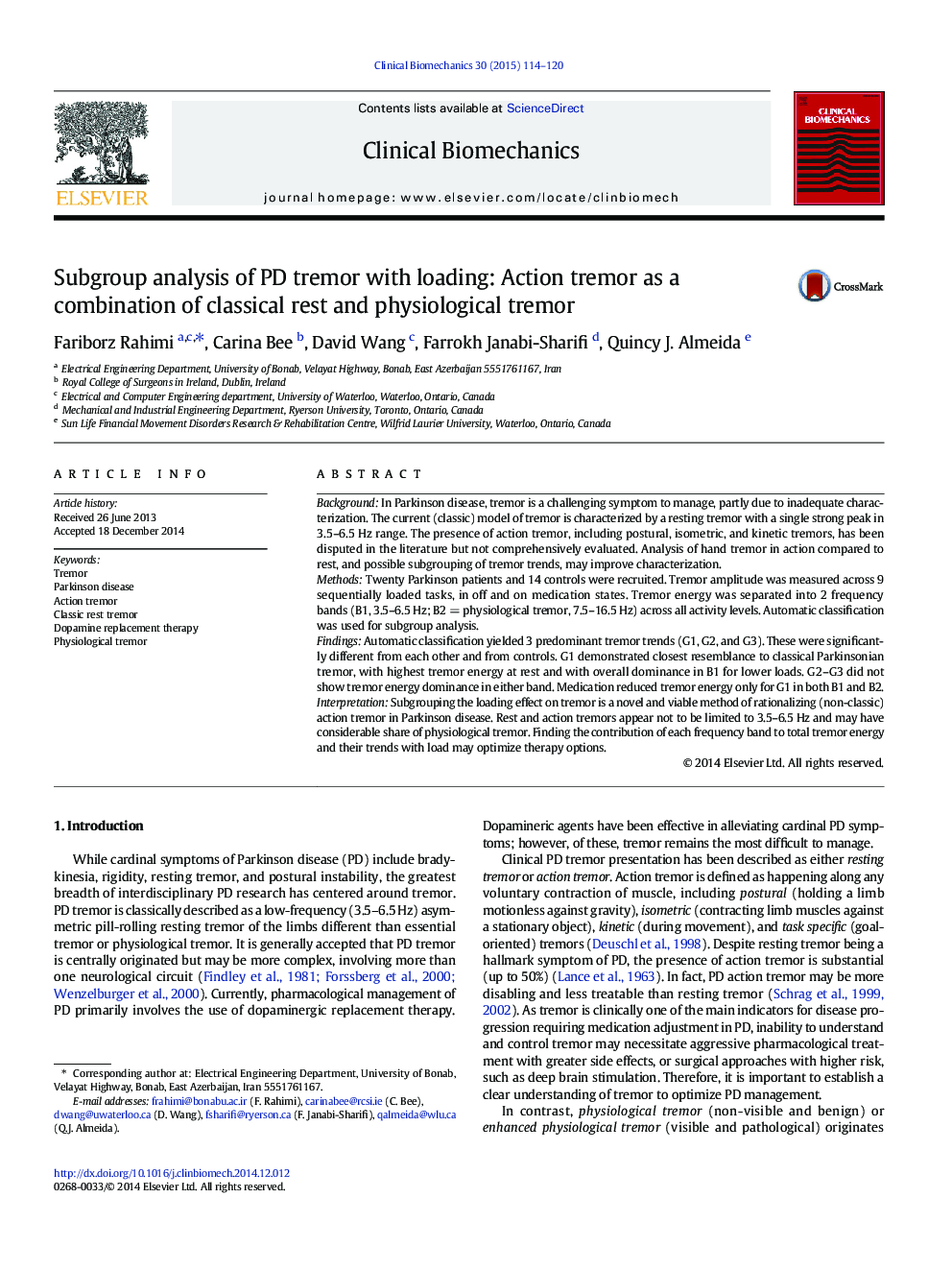| Article ID | Journal | Published Year | Pages | File Type |
|---|---|---|---|---|
| 4050317 | Clinical Biomechanics | 2015 | 7 Pages |
•Contributions of physiological tremor to Parkinsonian tremor are investigated.•Parkinsonian tremor frequency in narrow and broad spectrums is evaluated.•Results are compared to healthy controls.•Value of subgrouping tremor trends is highlighted as part of clinical assessment.•It may show potential for indicating optimal management therapy.
BackgroundIn Parkinson disease, tremor is a challenging symptom to manage, partly due to inadequate characterization. The current (classic) model of tremor is characterized by a resting tremor with a single strong peak in 3.5–6.5 Hz range. The presence of action tremor, including postural, isometric, and kinetic tremors, has been disputed in the literature but not comprehensively evaluated. Analysis of hand tremor in action compared to rest, and possible subgrouping of tremor trends, may improve characterization.MethodsTwenty Parkinson patients and 14 controls were recruited. Tremor amplitude was measured across 9 sequentially loaded tasks, in off and on medication states. Tremor energy was separated into 2 frequency bands (B1, 3.5–6.5 Hz; B2 = physiological tremor, 7.5–16.5 Hz) across all activity levels. Automatic classification was used for subgroup analysis.FindingsAutomatic classification yielded 3 predominant tremor trends (G1, G2, and G3). These were significantly different from each other and from controls. G1 demonstrated closest resemblance to classical Parkinsonian tremor, with highest tremor energy at rest and with overall dominance in B1 for lower loads. G2–G3 did not show tremor energy dominance in either band. Medication reduced tremor energy only for G1 in both B1 and B2.InterpretationSubgrouping the loading effect on tremor is a novel and viable method of rationalizing (non-classic) action tremor in Parkinson disease. Rest and action tremors appear not to be limited to 3.5–6.5 Hz and may have considerable share of physiological tremor. Finding the contribution of each frequency band to total tremor energy and their trends with load may optimize therapy options.
